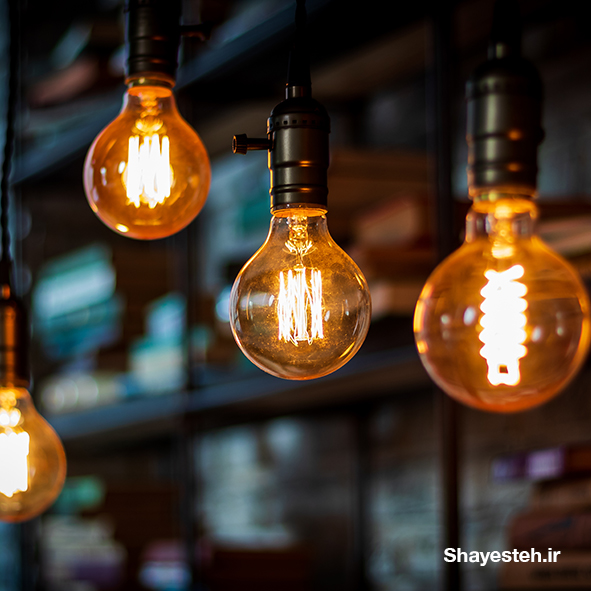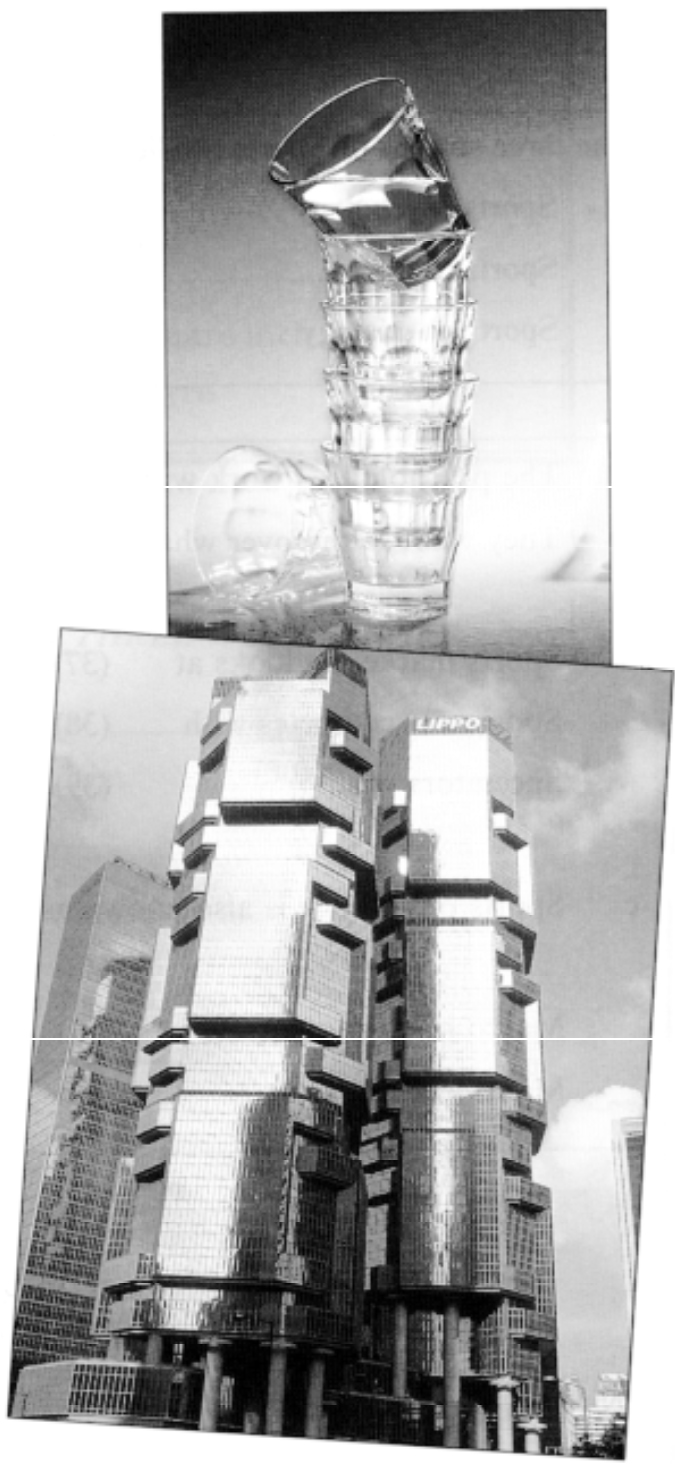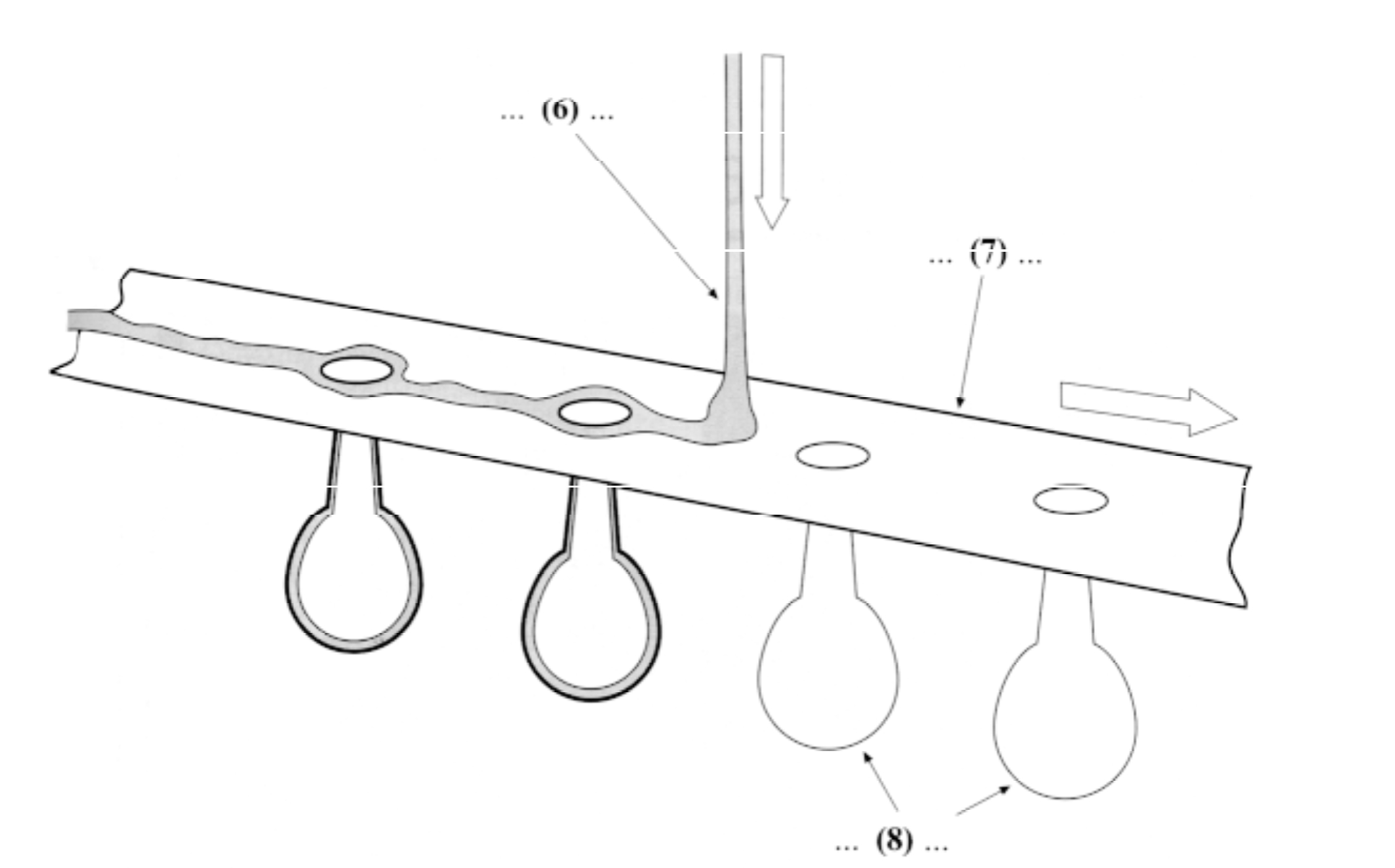در صورتی که اشکالی در ترجمه می بینید می توانید از طریق شماره زیر در واتساپ نظرات خود را برای ما بفرستید
09331464034GLASS - Capturing the dance of light
شیشه- حبس کردن رقص نور

 Glass, in one form or another, has long been in noble service to humans.
Glass, in one form or another, has long been in noble service to humans.
شیشه، در شکل های مختلف آن، مدتهاست که در خدمت انسان است.
As one of the most widely used of <strong>manufactured</strong> materials, and certainly the most versatile, it can be as imposing as a telescope mirror the width of a tennis court or as small and simple as a marble rolling across dirt.
این ماده به عنوان یکی از پرکاربردترین و مطمئنا همه کاره ترین ماده <strong>تولید</strong> شده، می تواند به اندازه آینه تلسکوپی به عرض زمین تنیس خیره کننده باشد و یا به اندازه یک تیله که روی خاک می غلتد، کوچک و ساده باشد.
The uses of this <strong>adaptable</strong> material have been broadened dramatically by new technologies glass fibre optics — more than eight million miles — carrying telephone and television signals across nations,
کاربردهای این ماده <strong>سازگار</strong> به کمک فناوری های جدید زیادی گسترش یافته است، مثلا فیبر های نوری شیشه ای- با طول بیش از هشت میلیون مایل- برای انتقال سیگنال های تلفنی و تلویزیونی در سراسر کشورها،
glass ceramics serving as the nose cones of missiles and as crowns for teeth; tiny glass <strong>beads</strong> taking radiation doses inside the body to specific organs, even a new type of glass fashioned of nuclear waste in order to dispose of that unwanted material.
هم چنین سرامیک های شیشه ای که به عنوان مخروط های نوک موشک ها و تاج های دندان استفاده می شوند، <strong>دانه</strong> های کوچک شیشه ای که دوزهای مختلف تشعشعات را به اندام های مختلف بدن می رسانند و حتی نوع جدیدی از شیشه که از زباله های اتمی (برای دفع این ماده ناخواسته) ساخته شده است.
On the horizon are optical computers. These could store programs and <strong>process</strong> information by means of light - pulses from tiny lasers - rather than electrons. And the pulses would travel over glass fibres, not copper wire.
در افق تکنولوژی کامپیوترهای نوری قرار دارند. اینها می توانند برنامه ها را ذخیره کرده و اطلاعات را با استفاده از نور- پالس های لیزرهای کوچک- به جای الکترون <strong>پردازش</strong> کنند. این پالس ها از طریق الیاف شیشه ای عبور می کنند، نه سیم مسی. این ماشین ها می توانند صدها برابر سریعتر از رایانه های الکترونیکی امروزی کار کنند و اطلاعات <strong>بسیار</strong> بیشتری را در خود جای دهند.
These machines could function hundreds of times faster than today’s electronic computers and hold <strong>vastly</strong> more information.
امروزه از فیبر نوری برای بدست آوردن تصویر واضح تر از اشیا بسیار کوچکتر از همیشه استفاده می شود- حتی ویروس های باکتریایی.
Today fibre optics are used to obtain a clearer image of smaller and smaller objects than ever before - even bacterial viruses. A new generation of optical instruments is <strong>emerging</strong> that can provide detailed imaging of the inner workings of cells.
نسل جدیدی از ابزار نوری در حال <strong>ظهور</strong> است که می تواند تصویربرداری دقیق از عملکرد داخلی سلول ها را فراهم کند.
It is the surge in<strong> fibre opti</strong>c use and in liquid crystal displays that has set the U.S. glass industry (a 16 billion dollar business employing some 150,000 workers) to building new plants to meet demand.
این افزایش استفاده از <strong>فیبر نوری</strong> و نمایشگرهای کریستال مایع باعث شده که صنعت شیشه ایالات متحده (تجارت 16 میلیارد دلاری با اشتغال زایی برای حدود 150،000 کارگر)اقدام به ساخت کارخانه های جدید برای تامین تقاضای شیشه کند.
But it is not only in technology and commerce that glass has <strong>widened</strong> its horizons. The use of glass as art, a tradition spins back at least to Roman times, is also booming.
اما شیشه فقط در فناوری و تجارت افق دید خود را <strong>گسترش</strong> نداده است. استفاده از شیشه به عنوان هنر، سنتی که به دوران روم باستان برمی گردد، نیز در حال رونق است. به نظر می رسد تقریباً در همه جا، مردان و زنان در حال دمیدن شیشه ها و خلق آثار هنری هستند.
Nearly everywhere, it seems, men and women are blowing glass and creating works of art. «I didn’t sell a piece of glass until 1975,» Dale Chihuly said, smiling, for in the 18 years since the end of the <strong>dry spell</strong>, he has become one of the most financially successful artists of the 20th century.
دیل چیهولی با لبخند گفت: "من تا سال 1975 هیچ شیشه ای نفروختم". اما حالا او 18 سال پس از <strong>دوران رکود</strong>، به یکی از موفق ترین هنرمندان قرن 20ام تبدیل شده است.
He now has a new <strong>commission</strong> - a glass sculpture for the headquarters building of a pizza company - for which his fee is half a million dollars.
او اکنون <strong>ماموریت</strong> جدیدی دارد- ساخت مجسمه شیشه ای برای ساختمان مرکزی یک شرکت پیتزا- که هزینه اش نیم میلیون دلار است.
But not all the glass technology that touches our lives is ultra-modern.
اما همه فناوری های شیشه ای حاضر در زندگی ما فوق مدرن نیستند.
Consider the simple light bulb; at the turn of the century most light bulbs were hand blown, and the cost of one was equivalent to half a day’s pay for the average worker.
یک لامپ ساده را در نظر بگیرید. در آغاز قرن بیشتر لامپ ها با دست دمیده می شدند و هزینه یک عدد از آنها معادل نصف روز حقوق برای یک کارگر متوسط بود.
In effect, the <strong>invention</strong> of the ribbon machine by Corning in the 1920s lighted a nation.
در واقع، <strong>اختراع</strong> دستگاه روبان توسط کورنینگ در دهه 1920، یک ملت را در روشنایی قرار داد.
The price of a bulb plunged. Small wonder that the machine has been called one of the great mechanical <strong>achievements</strong> of all time.
قیمت لامپ افت کرد. جای تعجب نیست که از این ماشین به عنوان یکی از بزرگترین <strong>دستاوردهای</strong> مکانیکی تمام دوران یاد شده است.
Yet it is very simple: a narrow ribbon of molten glass travels over a moving belt of steel in which there are holes. The glass <strong>sags</strong> through the holes and into waiting moulds.
با این وجود کارکرد این ماشین بسیار ساده است: یک روبان باریک از شیشه مذاب از بالای کمربند متحرک فولادی عبور می کند که در آن سوراخ هایی وجود دارد. با این وجود کارکرد این ماشین بسیار ساده است: یک روبان باریک از شیشه مذاب از بالای کمربند متحرک فولادی عبور می کند که در آن سوراخ هایی وجود دارد. شیشه از میان سوراخ ها فرو می رود و به قالب های انتظار می رود.
Puffs of compressed air then shape the glass. In this way, the envelope of a light bulb is made by a single machine at the rate of 66,000 an hour, as <strong>compared</strong> with 1,200 a day produced by a team of four glassblowers.
سپس جریان های هوای فشرده شده شیشه را شکل می دهند. به این ترتیب، لامپ توسط یک دستگاه با سرعت 66000 در ساعت ساخته می شود، <strong>در مقایسه</strong> با 1200 تا که در روز توسط یک تیم چهار نفره تولید می شود.
The secret of the <strong>versatility</strong> of glass lies in its interior structure. Although it is rigid, and thus like a solid, the atoms are arranged in a random disordered fashion, characteristic of a liquid.
راز <strong>تطبیق پذیری</strong> شیشه در ساختار داخلی آن نهفته است. اگرچه سفت و سخت است و بنابراین مانند مواد جامد است، اما اتم ها در آن به صورت بی نظم تصادفی چیده شده اند، که از مشخصه های مواد مایع است.
In the melting process, the atoms in the raw materials are <strong>disturbed</strong> from their normal position in the molecular structure; before they can find their way back to crystalline arrangements the glass cools.
در فرآیند ذوب، موقعیت طبیعی اتمهای موجود در مواد اولیه در ساختار مولکولی شان <strong>به هم می ریزد</strong>؛ قبل از اینکه آنها بتوانند به ساختار متبلور خود برگردند، شیشه خنک می شود.
This looseness in molecular structure gives the material what engineers call <strong>tremendous</strong> “formability” which allows technicians to tailor glass to whatever they need.
این سستی در ساختار مولکولی، ویژگی به ماده می بخشد که مهندسان آن را "شکل پذیری"<strong> فوق العاده</strong> می نامند و به تکنسین ها این امکان را می دهد تا شیشه را متناسب با هرگونه نیاز خود سازگار کنند.
Today, scientists continue to <strong>experiment</strong> with new glass mixtures and building designers test their imaginations with applications of special types of glass.
امروزه دانشمندان به آزمایش ترکیبات جدید شیشه ادامه می دهند و طراحان ساختمان تصورات خود را با به کار بردن انواع خاصی از شیشه <strong>آزمایش</strong> می کنند.
A London architect, Mike Davies, sees even more dramatic buildings using molecular chemistry. “Glass is the great building material of the future, the <strong>«dynamic</strong> skin»,’ he said. “Think of glass that has been treated to react to electric currents going through it, glass that will change from clear to opaque at the push of a button, that gives you instant curtains.
یک معمار لندنی، مایک دیویس، ساختمانهای چشمگیرتری را با استفاده از شیمی مولکولی می بیند. وی گفت: "شیشه ماده ساختمانی عالی در آینده است، یک "پوسته <strong>پویا".</strong> "به شیشه ای فکر کنید که برای واکنش در برابر جریان الکتریکی که از آن عبور می کند تغییر پیدا کرده است، شیشه ای که با فشار یک دکمه از حالت شفاف به حالت مات در می آید و پرده ای فوری در اختیار شما قرار می دهد.
Think of how the tall buildings in New York could perform a symphony of colours as the glass in them is made to change colours instantly.” Glass as instant curtains is available now, but the cost is <strong>exorbitant.</strong> As for the glass changing colours instantly, that may come true. Mike Davies’s vision may indeed be on the way to fulfilment.
به این فکر کنید که ساختمانهای بلند نیویورک چگونه می توانند یک سمفونی از رنگ ها اجرا کنند چرا که شیشه های استفاده شده در آنها برای تغییر رنگ فوری ساخته شده است." شیشه برای ساخت پرده فوری اکنون در دسترس است، اما هزینه آن <strong>بسیار زیاد</strong> است. شیشه ای که بلافاصله تغییر رنگ می دهد نیز ممکن است محقق شود. دیدگاه مایک دیویس ممکن است واقعاً در راه تحقق باشد.
Questions & answers
Questions 1-5
Reading Passage 1 has six paragraphs (A-F). Choose the most suitable heading/or each paragraph from the list of headings below. Write the appropriate numbers (i-x) in boxes 1-5 on your answer sheet. Paragraph A has been done for you as an example.
NB There are more headings than paragraphs so you will not use all of them. You may use any heading more at once.
|
List of Headings
i Growth in the market for glass crafts
ii Computers and their dependence on glass iii What makes glass so adaptable
iv Historical development of glass v Scientists’ dreams cost millions vi Architectural experiments with glass vii Glass art galleries flourish viii Exciting innovations in fibre optics ix A former glass technology x Everyday uses of glass |
| Example Answer Paragraph A X |
1 Paragraph B
2 Paragraph C
3 Paragraph D
4 Paragraph E
5 Paragraph F
Questions 6-8
The diagram below shows the principle of Coming’s ribbon machine. Label the diagram by selecting NO MORE THAN THREE WORDS from the Reading Passage to fill each numbered space. Write your answers in boxes 6-8 on your answer sheet.

Questions 9-13
Look at the list below of the uses of glass. According to the passage, state whether these uses exist today, will exist in the future or are not mentioned by the writer.
In boxes 9-13, write
A if the uses exist today
B if the uses will exist in the future
C if the uses are not mentioned by the writer
09 dental fittings
10 optical computers
11 sculptures
12 fashions
13 curtains
Answers:
1 viii
2 i
3 ix
4 iii
5 vi
6 molten glass/ ribbon of glass/ molten glass ribbon
7 belt of steel/ steel belt/ moving belt
8 (lightbulb) moulds
9 A
10 B
11 A
12 C
13 A
نظرات کاربران
هنوز نظری درج نشده است!